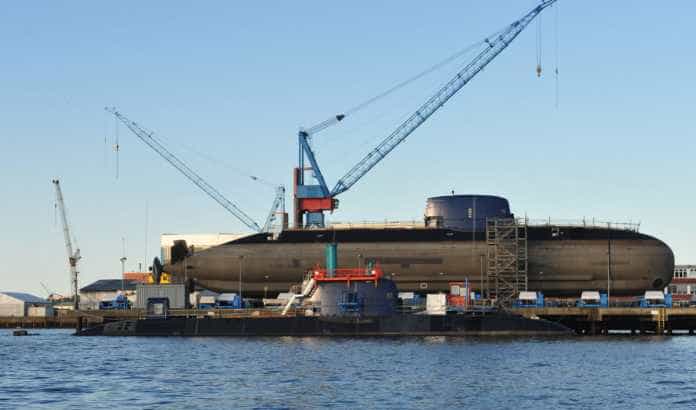
In 1941 the Uniform Regulations were modified to permit officers and men qualified who were eligible to wear the submarine insignia after they had been assigned to other duties in the naval service, unless such right had been revoked. The submarine insignia was to be worn at all times by officers and men qualified in submarine duty attached to submarine units or organizations, ashore and afloat, and not to be worn when not attached.

The recommendation was accepted by Theodore Roosevelt, Jr., Acting Secretary of the Navy. On 20 March, 1924, the Chief of the Bureau of Navigation recommended to the Secretary of the Navy that the design be adopted. It was a bow view of a submarine, proceeding on the surface, with bow planes rigged for diving, flanked by dolphins in a horizontal position with their heads resting on the upper edge of the bow planes.Today a similiar design is used: a dolphin fish flanking the bow and conning tower of a submarine. This design was executed in basrelief in clay. Two designs were submitted by the firm, and these were combined into a single design. Others showed submarines and dolphins, and still others used a shield design.Ī Philadelphia firm, which had done work for the Navy in the field of Naval Academy class rings, was approached by the Bureau of Navigation with the request that it design a suitable badge.

Some combined a submarine with a shark motif. Over the next several months the Bureau of Navigation (now known as BuPers) solicited additional designs from several sources. The suggestion was strongly endorsed by Commander Submarine Division Atlantic. He submitted a pen-and-ink sketch of his own showing a shield mounted on the beam ends of a submarine, with dolphins forward of, and abaft, the conning tower. Fleet, during WW II), suggested to the Secretary of the Navy (Bureau of Navigation) that a distinguishing device for qualified submariners be adopted.

King, Commander submarine Division Three (later Fleet Admiral and Commander in Chief, U.S.


 0 kommentar(er)
0 kommentar(er)
